Bathroom Remodeling: A Complete Guide for Tubs and Showers
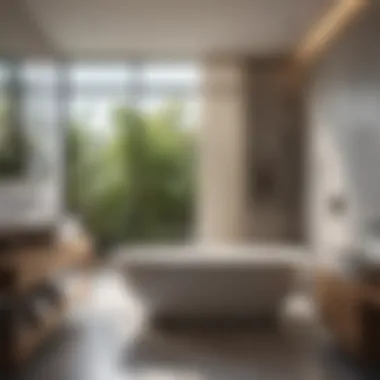
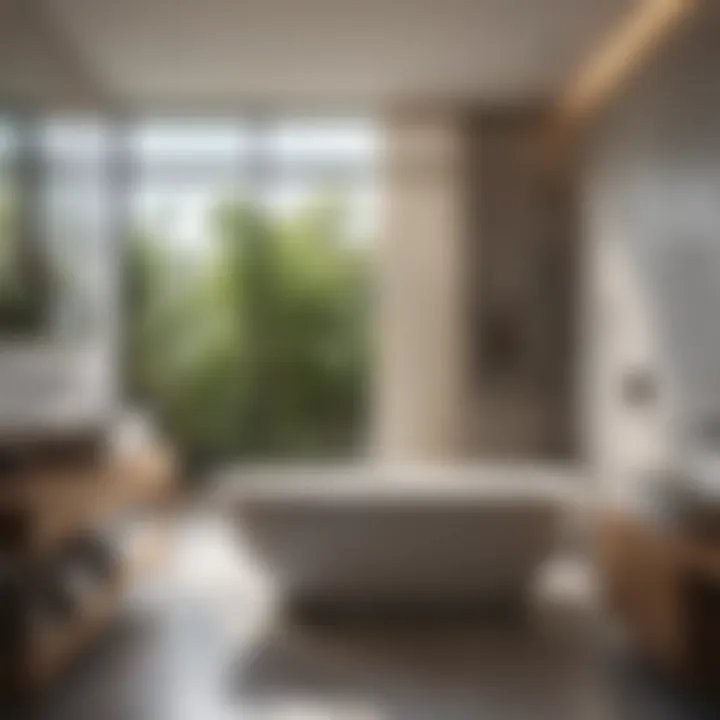
Intro
Remodeling a bathroom is not just about enhancing aesthetics; it’s about transforming a space into a personal sanctuary. The combination of a tub and shower can provide the best of both worlds—offering a quick rinse or a leisurely soak, depending on our mood. As we dive into the nuances of this remodeling adventure, we are going to explore several important aspects that are key to making informed decisions. This article will not only illuminate the trending styles that can elevate your space but also delve into color palettes that foster tranquility or vibrant energy. Along with that, we’ll touch upon practical elements such as material selection and space optimization to ensure your bathroom meets functional needs while looking fabulous.
Trending Styles
In today’s world of bathroom design, there are numerous styles to choose from, but two trends have particularly captured the imagination of homeowners: Modern Minimalism and Cozy Rustic.
Modern Minimalism
This style prioritizes simplicity and functionality. Picture clean lines and sleek surfaces, often draped in a monochromatic color scheme. Imagine a freestanding tub positioned next to a walk-in shower with frameless glass doors. Fixtures in matte black or chrome create a striking contrast against light-colored tiles.
The beauty of modern minimalism lies in its ability to evoke a sense of calmness and order. It speaks to those who favor a clutter-free environment, making everyday rituals more enjoyable.
Cozy Rustic
On the other hand, the cozy rustic style invites warmth and character into your bathroom. Think of wooden beams overhead, natural stone tiles underfoot, and as much greenery as you can fit into the space. A clawfoot tub can provide a vintage touch while a rain shower adds that luxurious feel.
This design embraces imperfections, celebrating the natural beauty found in raw materials. Soft, earthy color tones can enhance the comfort of this aesthetic, creating a sanctuary for relaxation away from the world.
Color Palettes
The choice of color can significantly impact the atmosphere of your bathroom. Let's look at two compelling options: Calming Neutrals and Bold Accents.
Calming Neutrals
Soothing shades of beige, taupe, and soft whites can create a serene environment. These tones, often reminiscent of nature, help to cultivate a space that feels light and airy. When paired with the right textures, such as smooth tiles or plush rugs, calming neutrals allow for a spa-like experience right at home. It’s the ideal backdrop for a bath where you can unwind after a long day.
Bold Accents
For those who prefer to make a statement, bold accent colors can add a pop of personality. Think deep navy blue or rich emerald green as a backdrop, complemented by lighter elements and vibrant decor pieces. This choice isn’t for the faint-hearted; however, it can transform a mundane bathroom into a vibrant focal point in your home.
"The right color palette can change the entire feel of your bathroom, making even the smallest space feel expansive and welcoming."
Selecting the right combination of trends and colors can truly elevate your bathroom's appeal. Factors such as natural light, size, and existing features should all be considered as you curate your personal oasis.
Prelims to Bathroom Remodeling
When it comes to home improvement projects, remodeling the bathroom often takes center stage. This space is not just a functional area; it serves as a personal sanctuary, offering moments of relaxation and rejuvenation. An efficient and thoughtfully designed bathroom enhances daily routines, making the start and end of the day a little more pleasant. It’s the blissful escape where you can wash away the stresses of daily life.
Remodeling with a focus on both tub and shower provides dual functionalities. Historical trends indicate that more homeowners are opting for a combination of both, as it caters to varied needs while efficiently utilizing space. In a world where personal comfort is paramount, designing a bathroom that aligns closely with individual tastes and habits is essential. The transition from outdated fixtures to modern aesthetics not only improves functionality but can significantly increase property value and appeal to potential buyers.
The Importance of a Well-Designed Bathroom
A well-designed bathroom isn’t merely about visual appeal. It's at the crossroads of comfort and efficiency. When each element is meticulously planned—from the layout to the fixtures—it allows for easy movement and maximizes usability. Proper arrangement can minimize congestion, which is especially vital in busy households. Imagine trying to navigate through cluttered bathroom spaces during the morning rush; that's a no-win scenario for anyone.
A thoughtfully executed design can also reduce maintenance needs. High-grade materials and smart placements promote long-lasting functionality and easy cleaning. For instance, selecting slip-resistant flooring can prevent accidents, ensuring safety, particularly for children and elderly family members. Ultimately, a well-designed bathroom becomes a peaceful retreat, blending aesthetics with practicality.
Benefits of a Tub and Shower Combination
When considering bathroom options, the tub and shower combination emerges as a popular choice for many homeowners. This configuration marries function with convenience, providing unique advantages.
- Versatility: Offering both a quick shower option for busy mornings and a relaxing bath for winding down at day’s end caters to the diverse preferences of all family members.
- Space Optimization: In compact bathrooms, combining a tub and shower can save valuable space, allowing for more room for additional elements such as storage or decorative touches.
- Enhanced Resale Value: A tub and shower combination can be attractive to potential buyers, making it an investment that pays off when it's time to sell.
- Comfort and Relaxation: There's something uniquely satisfying about soaking in a tub after a long day or enjoying a refreshing shower—having both readily available supports varied self-care rituals.
Planning Your Remodel
When it comes to remodeling your bathroom, taking the time to plan effectively can make all the difference. The process isn't just about aesthetics; it involves an intricate balance of budget, design, and function. Making thoughtful choices in the planning phase sets the foundation for a successful transformation into a welcoming oasis. After all, this is a space where serenity should reign, and that requires careful consideration of various components.
Not only does proper planning help you attain your vision, but it also ensures you don't end up with a half-baked project due to impulsive decisions or lack of foresight. Shaping your ideas beforehand allows you to visualize the end product and foresee potential challenges.
Setting a Budget
Creating a budget is perhaps the single most important step in planning your remodel. It's no secret that expenses can pile up faster than you can say "showerhead". To avoid any unpleasant surprises, you must define what you are willing to spend before diving headfirst into any design choices. Be realistic about your financial situation and the resources you have at hand.
When setting a budget, consider allocating your finances in the following manner:
- Materials and Fixtures: Allocate funds for high-quality materials, which can include everything from tiles to showerheads.
- Labor Costs: Hiring professionals can be pricey but also invaluable if you want the work done right. It's always cost-effective to bring in an expert for complex tasks.
- Contingency Fund: A wise rule of thumb is to set aside about 10% of your budget for unpredicted expenses. Trust me, they’ll pop up!
It's a balancing act—spending luxuriously in some areas while being frugal in others. The key is to prioritize elements that enhance your overall experience, such as investing in durable and aesthetically pleasing fixtures. Don't forget to consider long-term savings as well, like choosing water-efficient options that may have a higher upfront cost but will save you in utility bills down the line.
Defining Your Needs and Preferences
Your bathroom is a personal sanctuary, so understanding your specific needs and preferences is crucial in this remodeling journey. Ask yourself questions that will help clarify what you truly want. Are you looking for a relaxing retreat after a long day? Do you need a functional space for family use? Or perhaps a bit of both?
Consider these factors:
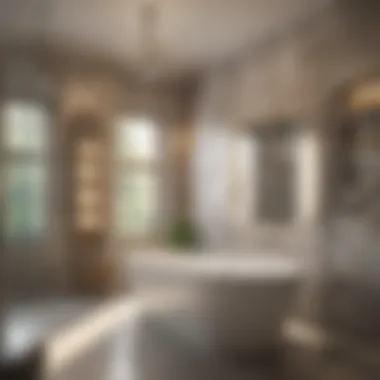
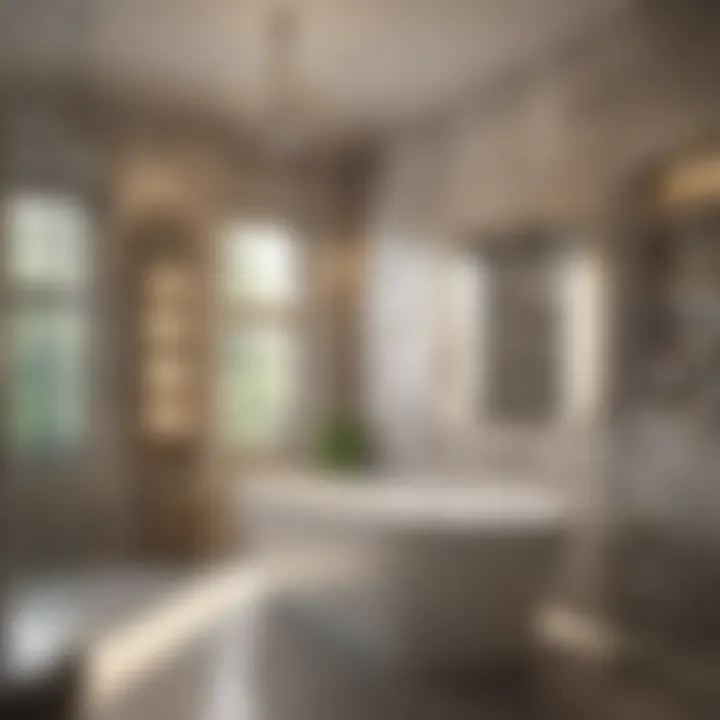
- Usage: If you have a busy household, practicality might take precedence. Think about features such as storage solutions to keep items organized.
- Style Preferences: What’s your aesthetic? Rustic charm or modern minimalism? Knowing your taste will help steer your design choices.
- Future Needs: Are you planning a family? Might you need to accommodate aging parents or guests down the road? Thinking ahead can help you avoid costly adjustments later.
"Understanding your needs today can prevent regrets tomorrow."
With a clear sense of purpose, you can delve into the available designs and materials that align with your preferences and take the first steps toward creating a well-planned bathroom that suits your lifestyle. Having this clarity not only streamlines the design process but also ensures that what you finally create is a space you'll love for years to come.
Design Considerations
When it comes to bathroom remodeling, the design greatly influences not just the aesthetics but also the functionality and efficiency of the space. Thoughtful design considerations ensure that the bathroom is more than just a functional necessity; it's a sanctuary for relaxation and rejuvenation.
Understanding how different elements work together can help you create a space that suits your lifestyle and reflects your personal style. Some aspects you might want to consider include the layout, style of fixtures, and how light plays into the space. By focusing on these factors, homeowners can maximize comfort while retaining an inviting look that feels cohesive.
Choosing Between Tub and Shower Styles
Understanding the different styles of tubs and showers can make a significant impact on your bathroom’s look and feel.
Freestanding Tubs
Freestanding tubs are making a splash in modern bathroom designs. They are not attached to walls, hence offering a sense of openness. Their key characteristic is their sculptural form, which can act as a stunning centerpiece in the room.
Freestanding tubs come in various shapes and materials, allowing you to find one that matches your decor perfectly. The biggest advantage? They provide a luxurious, spa-like experience. The downside is they require more space than traditional tubs, which might not be ideal for smaller bathrooms.
Drop-In Tubs
Drop-in tubs, on the other hand, are designed to be recessed into a frame and surrounded by decking. This allows for a customized look that can tie into the overall bathroom design seamlessly. Their defining trait is versatility and adaptability; you can enhance them with decorative edges and surrounding finishes.
These tubs are generally more space-efficient than freestanding ones, making them a popular choice for standard bathroom layouts. However, depending on the materials used for the surrounding deck, they may require more upkeep to keep them looking good over time.
Shower Enclosures
Now, shift your focus towards shower enclosures. These installations serve a vital role in elevating the functionality of your bathing space. A key characteristic of shower enclosures is their size and customizability, offering you the choice between walk-in models or traditional setups.
Shower enclosures are particularly appreciated for their ability to conserve space while delivering an effective showering experience. They're also easier to clean compared to a tub. One downside might be that they don't offer the relaxation element that soaking in a tub provides, and you're likely to miss out on that leisurely bath vibe.
Space Optimization Techniques
Making the most out of limited bathroom space is a common challenge. Designing for efficiency does not mean sacrificing style. Instead, effective space optimization enhances the overall feel of the bathroom, making it functional and welcoming.
Corner Showers
Corner showers are an intelligent solution if you're trying to maximize floor space. These fixtures slot neatly into the corners of a bathroom, freeing up valuable real estate for other elements. Their defining feature is their triangular design; it allows for a more open flow to the rest of the room.
Not only do they save space, but they also provide a modern touch to your bathroom. Corner showers can be fitted with various styles of glass or tile, fitting into your desired aesthetic. On the flip side, they may not provide as spacious a showering experience as a straight shower does.
Dual-Function Fixtures
Lastly, let’s talk about dual-function fixtures. These innovative designs are a boon for small bathrooms, combining elements to create multiple uses in one package. For example, a showerhead that doubles as a high-pressure hand shower or even faucets that integrate into tubs for flexible use.
The standout feature of dual-function fixtures is their ability to simplify your bathroom's workflow without taking up extra room. However, these designs can sometimes mean a compromise on either performance or style. But if you're constrained by space, the trade-off can be well worth it.
"Good design is not just what looks good; it's functionality that meets both needs and preferences."
Material Selections
When taking on a bathroom remodel, especially one that involves both a tub and a shower, selecting the right materials becomes paramount. These choices not only shape the aesthetics of the space but also play a crucial role in durability and maintenance. Each material option comes with its own set of characteristics, benefits, and considerations, which can significantly impact your overall design vision and functional usage.
Durable and Aesthetic Materials for Tubs
Cast Iron
Cast iron tubs are a time-tested option known for their strength and durability. One prominent characteristic of cast iron is its heat retention; it can keep water warm for a longer period, making your bathing experience a cozy one. This robust material is often enameled, giving it a sleek finish which enhances the overall look of the bathroom.
Cast iron’s unique feature lies in its exceptional durability; it can last decades with proper care, and, unlike many other materials, it resists chipping and denting quite nicely. However, the weight of cast iron can be a drawback; it requires a sturdy floor structure to support it, which may lead to additional remodeling costs. Still, if you're after a classic and eleganty designed space, this option is worth considering.
Acrylic
Acrylic tubs are prized for their versatility and lightweight nature. They come in a variety of shapes and sizes and can be molded to fit more unique designs, which can be useful in applications where space is limited. An essential quality of acrylic is its warmth to the touch; it does not retain heat like other materials, so you might find it more comfortable initially.
The unique feature of acrylic is its ability to be repaired; superficial scratches can often be buffed out, keeping the surface looking fresh and new with little fuss. However, one must note that acrylic can fade over time under harsh sunlight, and it may also be prone to scratches if not handled with care. This makes it a suitable choice for families looking for creativity and ease of use in their bath space.
Fiberglass
Fiberglass bathtubs have gained popularity due to their affordability and lightweight properties. Known for being easy to install, fiber glass offers a smooth finish and is often available in a variety of colors. The key characteristic that sets fiberglass apart is its resistance to rust and corrosion, making it a great fit for humid environments like bathrooms.
The unique aspect of fiberglass is that it combines a mix of durable materials that can withstand the rigors of daily use, though they do require regular maintenance to keep their glossy finish intact. On the down side, fiberglass tends to develop yellow stains over time, and it can chip or crack more easily than heavier materials such as cast iron. Therefore, it’s wise to consider this option if you’re on a budget but still seeking a functional solution.
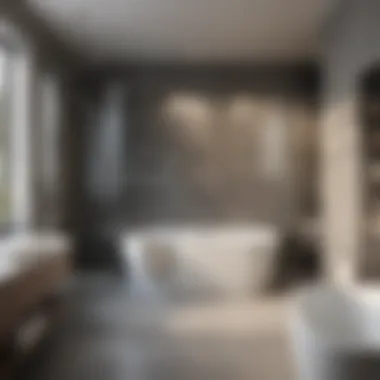
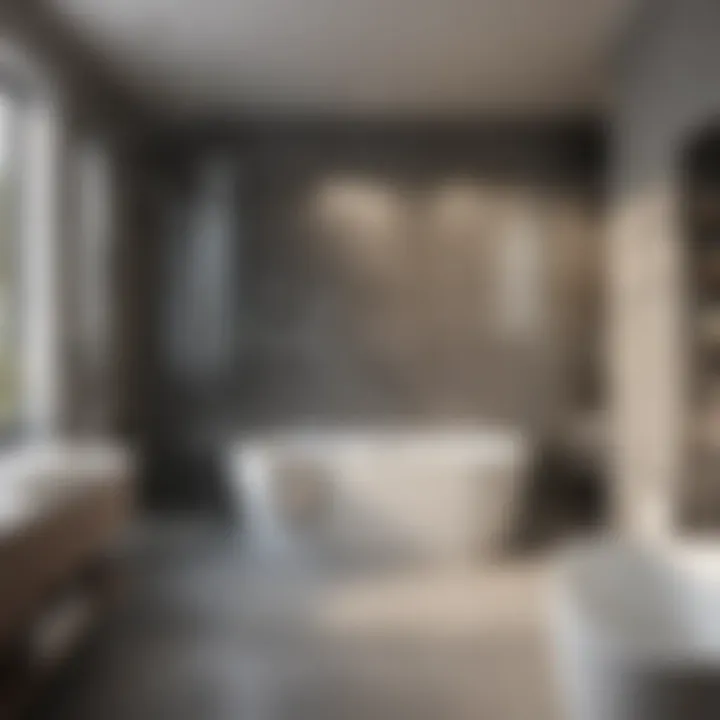
Shower Materials: What to Choose?
Choosing the right materials for your shower is equally important, as they affect both the look and utility of the space.
Tile Options
Tile is an enduring classic in the bathroom that offers unlimited aesthetic variety. One significant quality of tiles is their water-resistance, which makes them perfect for shower areas. Available in different textures, sizes, and designs, tiles can be used to create everything from minimalist to intricate patterns.
This versatility is a major benefit; you can mix and match to create a personalized space that reflects your taste. However, the grout lines in tiled showers can be prone to mold and mildew if not properly maintained, so it’s essential to incorporate features for easy cleaning, and ensure regular maintenance.
Glass Panels
Glass panels have become a popular choice for modern showers due to their sleek appeal and ability to visually expand a space. They create clean lines and can often be customized to various shapes and sizes which plays into modern design aesthetics. Their primary advantage is that they allow light to flow through, making small bathrooms feel more open and airy.
However, they do require regular cleaning, as glass can easily show water spots and soap scum, which can be frustrating for some homeowners. Still, if you’re looking for elegance, glass might be the way to go.
Vinyl Curtains
Vinyl curtains are an often underappreciated choice for shower enclosures, primarily due to their affordability. They’re lightweight and simple to install, making them suitable for quick upgrades. An easy feature of vinyl is the availability of various designs, which can cater to diverse tastes. Plus, they’re generally easier to clean and maintain than many other materials.
On the flip side, vinyl is less durable than tile or glass; it can discolor or tear over time under the constant exposure to water and humidity. If you're looking for a temporary solution or an economical choice, vinyl curtains could serve your needs well without breaking the bank.
Incorporating Technology
In the relentless evolution of modern living, technology has seeped into every nook and cranny of our homes—bathrooms have not been left behind. Today, incorporating technology in bathroom remodeling extends far beyond mere convenience; it creates a retreat tailored to individual preferences while enhancing functionality. One could say that integrating tech smartly transforms the bathroom into a sanctuary of relaxation and efficiency.
Smart Showers and Tubs
When we think of smart showers and tubs, a few standout features immediately spring to mind. These systems frequently allow users to control water temperature, flow rate, and even lighting—all from the comfort of a smartphone app or a sleek wall panel.
Imagine stepping into your shower, and with the gentle press of your fingertip, setting the exact temperature you prefer, selecting a pre-programmed relaxation ambiance, and having the water warmed up before your feet touch the tiles—sounds luxurious, doesn’t it?
The benefits of smart systems include:
- Customization: Tailor your bathing experience to your liking.
- Remote Control: Activate your water settings before even entering the room.
- Integration: Sync with other smart home devices, addressing comfort and energy management.
But it doesn’t just stop at the visual appeal; the technology also aims to optimize water use. Sensors can detect when you step in or out, automatically pausing or adjusting water flow accordingly. The result is a blend of technology and efficiency that appeals to both environmentally-conscious homeowners and those who appreciate modern conveniences.
Water Efficiency Solutions
Water efficiency solutions are not merely buzzwords—they are a pivotal aspect of responsible homeownership, especially with the increasing focus on sustainability. Decreasing water waste is crucial for both the planet and your wallet. When considering your bathroom remodel, integrating water-efficient fixtures can lead to significant savings over time, not to mention reducing your household’s ecological footprint.
Some prominent solutions include:
- Low-Flow Showerheads: These fixtures can cut water consumption by as much as 40% while maintaining a satisfying shower experience.
- Dual-Flush Toilets: This type of toilet offers users the option to choose between a full or half flush, allowing for better water management based on need.
- Tap Timers: Install devices that can limit the duration of showers, ensuring members of the household don't get carried away.
By implementing such features, you’ll not only make strides towards a more efficient water usage pattern, but also potentially qualify for rebates and incentives offered by local utility companies.
Studies show that households using water-efficient fixtures can save up to 20% on their water bills each year.
Whether you decide to fully embrace smart technology or opt for simpler water-saving solutions, the integration of modern tech into your bathroom can provide comfort, savings, and sustainability. In the end, the journey of remodeling your bathroom should not just focus on aesthetic pleasure but also on creating a functional space that reflects your values and aspirations.
Lighting and Ventilation
In the realm of bathroom remodeling, lighting and ventilation are often overlooked but are undeniably vital aspects. You're not just creating a space that looks good; you need a bathroom that feels good to be in. Good lighting can transform a dull room into a bright oasis, while proper ventilation ensures that space stays dry and mold-free. These two factors not only enhance the aesthetic but also improve functionality and comfort in this intimate area of your home.
Selecting the Right Lighting Fixtures
When it comes to lighting, it isn’t simply about illumination; it’s about setting the right mood while offering practical function. Choosing the right fixtures plays a key role.
Ambient Lighting
Ambient lighting serves as the foundational layer of illumination in your bathroom, tying the room together in a soft, cohesive glow. This type of lighting is often ceiling-mounted or installed around the perimeter of the space. It ensures that the entire room is evenly lit, so you won't be left squinting as you comb your hair or brush your teeth.
A key characteristic of ambient lighting is its ability to create a warm and welcoming atmosphere, which is especially important in spaces where you unwind. It’s a popular choice for bathrooms due to its ability to produce gentle light that calms rather than overwhelms.
The unique feature of this lighting is flexibility. With dimmable fixtures, you can adjust the brightness depending on your needs—think bright for morning routines and softer for evening baths.
However, one disadvantage can be that overly spread out fixtures might create shadows in corners, which can be unappealing. Balancing ambient light with supplementary sources is essential to avoid that.
Task Lighting
Task lighting focuses on illuminating specific areas where direct work takes place, such as above the sink or near mirrors. It’s essential for activities that require precision, like shaving, makeup application, or personal grooming. Bright, focused light fixtures make these tasks easier and safer.
One of the key characteristics of task lighting is that it’s brighter and more focused compared to ambient lighting. Whether it’s wall-mounted sconces or backlit mirrors, the right task lighting alleviates the frustration of shadowed faces and dim reflections.
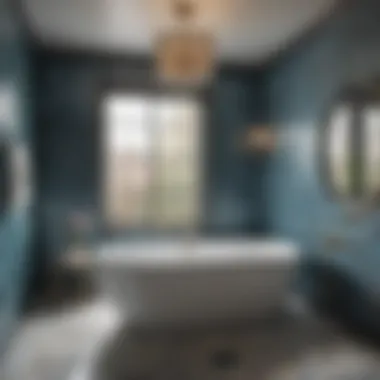
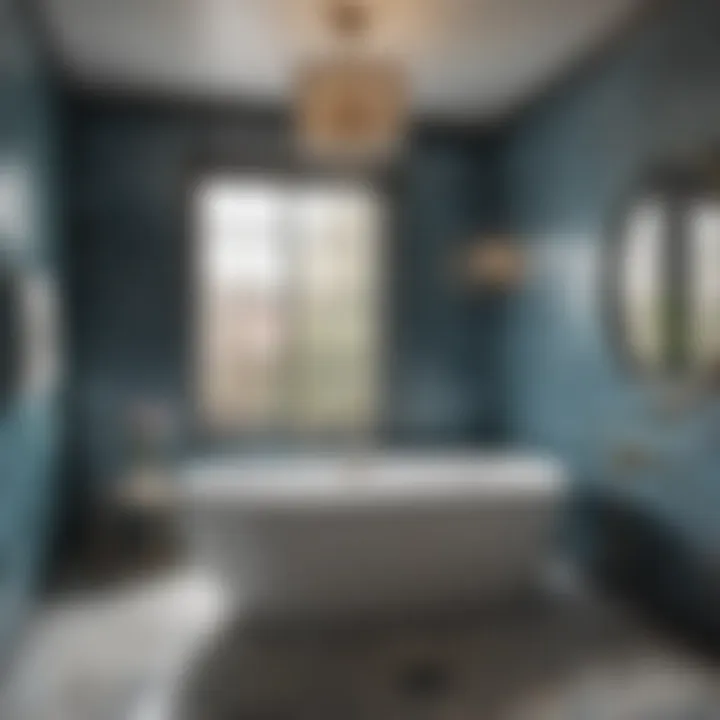
While task lighting is beneficial for clarity, it can sometimes be harsh if not handled right. Too much brightness can strain the eyes, so it's crucial to strike the right balance with ambient lighting for comfort.
Importance of Ventilation
Ventilation in the bathroom is not an afterthought; it’s a fundamental necessity. The bathroom is a high-moisture area, and without proper ventilation, this dampness can lead to severe issues such as mold and mildew growth. These not only look bad but can pose health risks, especially for vulnerable individuals like young children or those with respiratory issues.
A good ventilation system helps reduce humidity and moisture levels, keeping the air fresh and the surfaces dry. Options include exhaust fans that can be timed or operated by a switch. They should be powerful enough to clear the air quickly but quiet enough to not disturb your peaceful bathing experience.
Additional benefits include odor control and maintaining comfortable temperatures in your bathroom. After a hot shower, a proper ventilation system can prevent that suffocating feeling, creating a more enjoyable atmosphere.
Proper lighting and ventilation bring life to your bathroom. Not only visually, but they also enhance usability while protecting your home’s integrity.
In summary, when remodeling your bathroom, consider carefully the lighting and ventilation systems. The right choices here set the tone for the entire space and significantly affect both functionality and enjoyment.
Final Touches and Decor
When it comes to giving your bathroom that finishing touch, the details matter more than you might think. Final touches and decor are what transform a barren bathroom into a sanctuary, a place where one can unwind and enjoy the finer things in life. It's like adding whipped cream on top of a hot chocolate; it brings together the flavors and elevates the experience. These elements are not merely decorative; they enhance functionality while expressing personal style.
Consider these aspects:
- Accessories and fixtures can improve usability.
- Design aesthetics through decoration can create harmony.
- Thoughtfully chosen decor can evoke serenity and comfort.
In small bathrooms, every inch counts. Hence, the right accessories can play a vital role in maximizing space while adding a splash of personality. By focusing on the final details, you align the space with both functionality and visual appeal, striking a balance that resonates well with homeowners.
Choosing Accessories and Fixtures
Towel Bars
Towel bars are often one of the more overlooked aspects when designing a bathroom. However, their simplicity is what renders them truly effective. A well-placed towel bar can not only offer a convenient spot to hang towels but also enhance the overall design of the space.
The key characteristic of towel bars is their versatility; they come in a variety of styles, from modern to vintage. This makes them a beneficial choice because you can find one that aligns perfectly with your bathroom's decor. A unique feature of many towel bars today is their ability to store multiple towels rather than just one or two, which can prove advantageous in busy households.
Advantages can include:
- Easy access to towels, promoting cleanliness.
- Stylish options that contribute to the design.
Disadvantages might be that some less sturdy models can bend under excessive weight, causing frustration.
Shower Caddies
Shower caddies serve a crucial purpose by keeping bathroom essentials organized and accessible. They provide a functional solution to the usual clutter, presenting an organized appearance while making daily routines smoother.
The primary characteristic of shower caddies is their capacity to hold various items—from shampoo bottles to loofahs. They adapt well to diverse spaces, making them a popular choice for remodels where the layout is tight. Their unique feature often includes hanging options that utilize vertical space effectively, allowing for more ground space in smaller showers.
In terms of advantages, shower caddies:
- Help eliminate mess, keeping everything in order.
- Come in a variety of materials and styles, keeping design flexibility.
However, some models may have disadvantages such as rusting if made of low-quality metals or having limited capacity that doesn’t hold larger bottles.
Incorporating Plants and Artwork
Bringing life into the bathroom through plants and artwork is a choice that transcends aesthetics; it connects the space to nature. Plants can infuse freshness and vitality, creating a calming ambiance that inspires relaxation. Select low-maintenance plants such as pothos or snake plants that thrive in humid environments.
Artwork, too, can elevate a bathroom's charm. Whether it’s a serene landscape or vibrant abstract pieces, thoughtfully chosen artwork can draw attention and set the mood. Utilizing bright colors can energize a space, while softer tones add a calming touch. Just remember to place them where condensation won’t cause damage, ensuring the lasting beauty of your decorations.
Each small improvement contributes significantly to the overall feel of your bathroom, making it distinctive and aligned with your personal essence.
In summary, focusing on final touches and decor is not a trivial pursuit; it’s the cherry on top of the remodeling cake. Your personalized choices will give your bathroom its own character and create an environment that feels uniquely yours.
Epilogue
Remodeling a bathroom, especially focusing on the blend of tubs and showers, is not just about aesthetics; it's about crafting a sanctuary that caters to both function and serenity. The changes you make can influence your daily routines and transform a mundane space into a personal retreat. In this guide, we have explored key aspects that contribute to an effective remodel, such as planning, material selection, and lighting. These elements work in harmony to create an inviting and practical atmosphere.
A well-designed bathroom isn't merely a luxury; it can enhance your home's value and create a more pleasant living environment. Considerations like the choice between a freestanding tub or an enclosed shower can make all the difference. Engaging with the thoughtful layout and choosing quality materials can elevate the space, ensuring it's both lovely and durable. This brings to light how crucial space optimization is—especially when working with limited square footage.
Moreover, technology incorporation like smart fixtures reflects a modern approach, demonstrating how the integration of innovation can contribute to water efficiency and convenience. Bathing has evolved; it is no longer just a necessity but an experience, and this article offers insights into refining that experience.
Ultimately, the essence of remodeling your bathroom is appreciating your personal touch. The individual choices in décor and functionality resonate with who you are, making this space uniquely yours. The benefits of combining tub and shower elements reflect both utility and style, unfolding an extensive potential that can be harnessed in your own home.
Summary of Key Points
- A well-designed bathroom enhances both functionality and aesthetics, creating a tranquil retreat.
- Thoughtful planning and budget-setting are essential to a successful remodeling project.
- Selecting materials that are both beautiful and durable plays a significant role in the long-term satisfaction with the remodel.
- Including technology can improve water efficiency and elevate the user experience.
- Personal touches in accessories and fixtures complete the transformation, marking your bathroom as a reflection of your taste.
Encouragement to Personalize Your Space
When it comes to creating your perfect bathroom, don’t shy away from making it your own. Personalization is what will set your space apart and make it resonate with your lifestyle. Consider unique elements like handmade soap dispensers or custom artwork that can speak to your style. Think about the colors and themes you enjoy—maybe a coastal vibe with soft blues and whites or a warming earthy palette.
"Your bathroom should be a place you love escaping to, not simply another room in the house."
Use mirrors in creative ways to enhance light and space. Invest in accessories that reflect your interests, be it modern minimalist or rustic charm. Finding a balance between practicality and aesthetic appeal is essentially about creating harmony within the space.
Ultimately, as you reshape your bathroom, know that this is your sanctuary, a personal space where you can unwind or refresh. Blending design choices with elements that resonate with you will culminate in a result that is more than just functional; it will be a true representation of you.















